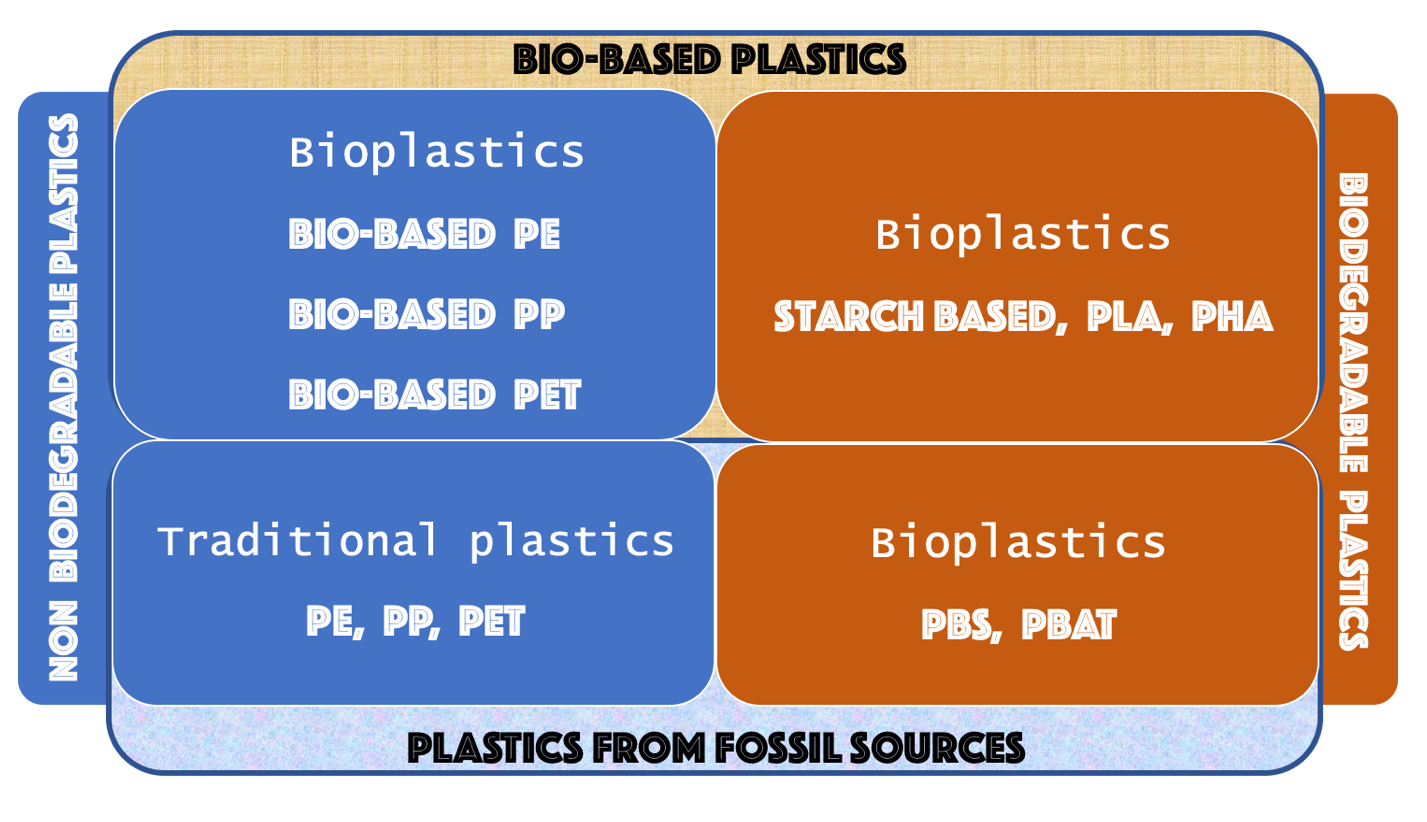What are bioplastics?
The European Bioplastics association defines a plastic material as a bioplastic if it is either biobased or biodegradable or has both properties. Bioplastics are a family of polymeric materials characterized by different chemical-physical properties and application fields.

What does biobased mean?
The term biobased means that the material derives, even partially, from biomass, for instance plants. Generally, the biomass used for producing bioplastics stems from corn, sugar cane, cellulose or ligno-cellulosic materials.
What does biodegradable mean?
A material is defined as biodegradable when it is subject to biodegradation, a chemical process in which microorganisms available in the environment convert material constituents into natural substances such as water, carbon dioxide, and compost.
The ability of a plastic material to biodegrade is related to its chemical structure. The extent of the biodegradation process also depends on the environmental conditions, that is, location, temperature, humidity. However, biodegradability does not depend on the sources used to produce a material. In other words, 100% bio-based plastics can be non-biodegradable and 100% fossil-based plastics can biodegrade.
Bioplastics can be divided into three groups of polymers:
- Biobased non-biodegradable plastics, such as polyethylene (Bio-PE), polypropylene (Bio-PP) and polyethylene terephthalate (Bio-PET).
- Biobased biodegradable plastics such as polylactic acid (PLA), starch blends and polyhydroxy alkanoates (PHAs).
- Fossil-based biodegradable plastics such as polybutylene adipate terephthalate (PBAT) and polyhydroxybutylene succinate (PBS).

What is a compost?
Compost is a mixture of ingredients used to fertilize and improve the soil. Compost is commonly prepared by decomposing plant, food waste and recycling organic materials and is the result of a fermentation and transformation of natural organic substances.